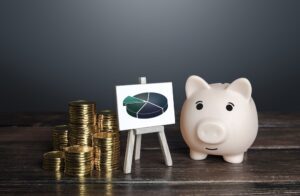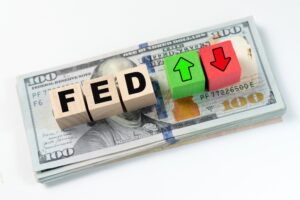Investor Sentiment in Market Cycles
The role of investor sentiment in market cycles is an important topic in the field of economics. It revolves around the idea that emotions and biases play a major role in driving the ups and downs of financial markets. In this blog, we will explore the role of euphoria and depression in market cycles, examining how these emotional states can affect asset prices and the overall performance of markets.
Euphoria in Market Cycles
Definition of Euphoria
Euphoria in financial markets refers to a state of extreme excitement and optimism among investors. It is characterized by a strong belief that asset prices will continue to rise indefinitely, leading to excessive buying and inflated valuations. Euphoria can be fueled by positive economic news, strong corporate earnings, or a general sense of optimism in the market.
Causes of Euphoria in Markets
There are several factors that can contribute to a state of euphoria in financial markets. One of the main causes is the herd mentality, where investors tend to follow the crowd and make investment decisions based on the actions of others. When a large number of investors are buying and driving up prices, it can create a feedback loop of positive sentiment and further fuel the euphoria.
Another factor that can contribute to euphoria is the availability of easy credit. When interest rates are low and credit is easily accessible, investors may be more willing to take on risk and invest in speculative assets. This can create a sense of euphoria as investors believe they can make easy profits by borrowing money and investing in assets that are rapidly appreciating in value.
Impact of Euphoria on Investor Decisions
Euphoria can have a significant impact on investor decisions and market behavior. Investors in a state of euphoria tend to exhibit irrational exuberance, ignoring traditional valuation metrics and chasing after high returns. This can lead to asset price bubbles, where prices become detached from their underlying fundamentals.
During euphoric market conditions, investors may also become overconfident and take on excessive risk. They may engage in speculative trading strategies or invest in assets that they do not fully understand. This can increase the volatility of markets and make them more susceptible to sudden downturns.
Depression in Market Cycles
Depression in financial markets refers to a state of extreme pessimism and fear among investors. It is characterized by a lack of confidence in the economy and a belief that asset prices will continue to decline. During a depression, investors may sell off their assets in an attempt to cut their losses or protect their capital, leading to a downward spiral in prices.
Causes of Depression in Markets
Depression in financial markets can be caused by a variety of factors. Economic recessions or financial crises are often triggers for a state of depression. Negative economic indicators, such as rising unemployment, declining consumer spending, or weak corporate earnings, can create a sense of gloom and doom among investors.
External events, such as geopolitical tensions or natural disasters, can also contribute to a state of depression in financial markets. These events can create uncertainty and fear among investors, leading to a sell-off of assets and a decline in prices.
Impact of Depression on Investor Decisions
Depression can have a profound impact on investor decisions and market behavior. During a state of depression, investors tend to exhibit risk aversion and a desire to preserve capital. They may sell off their assets and move their investments into safer assets, such as cash or government bonds.
The fear and pessimism during a depression can also lead to a lack of confidence in the market. Investors may become reluctant to invest in risky assets or make long-term commitments. This can lead to a decline in investment activity and a slowdown in economic growth.
Conclusion
The role of euphoria and depression in market cycles is an important and complex topic. It is essential to understand how these emotional states can influence investor behavior and asset prices in order to make better financial decisions. By closely examining the role of euphoria and depression in financial markets, we can gain valuable insights into the dynamics of market cycles.
Investor sentiment plays a crucial role in driving market cycles. Euphoria can lead to asset price bubbles and excessive risk-taking, while depression can result in a sell-off and risk aversion. It is important for investors to be aware of their emotions and biases and to make investment decisions based on sound analysis and a long-term perspective.
To gain a better understanding of investor sentiment and its impact on market cycles, investors can analyze market indicators, sentiment surveys, and news headlines. They can also study the behavior of individual companies and their stock prices during different market conditions. By staying informed and maintaining a disciplined approach to investing, investors can navigate market cycles more effectively and achieve their financial goals.







